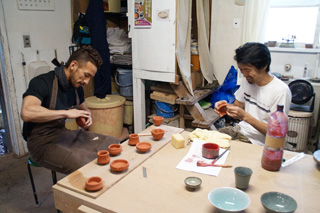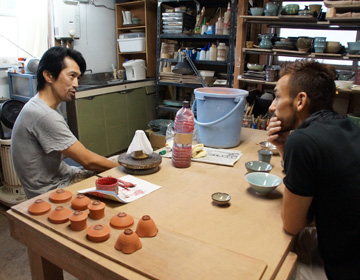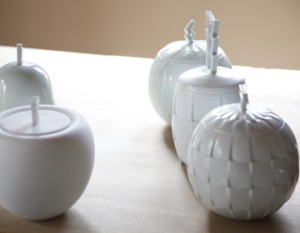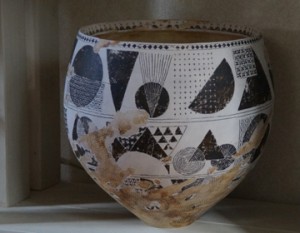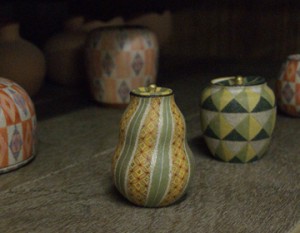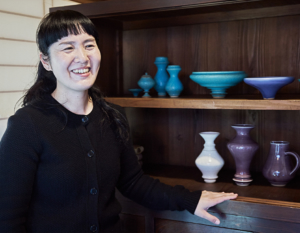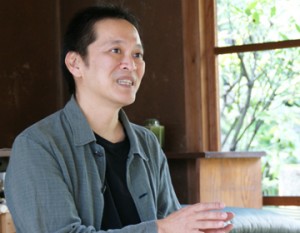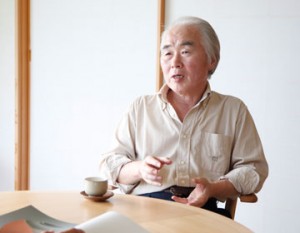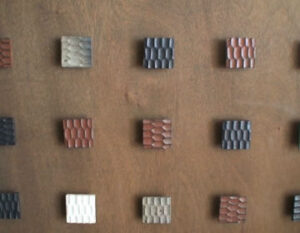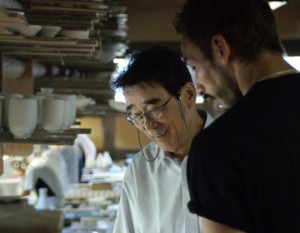Final crackling designed by the flames
“Wow, it’s beautiful” mumbled Nakata as he took a look at a piece by the potter Hidekazu Nakamura. He was especially attracted to the beautiful patterns of the “Kannyu” on the surface of the work. “Kannyu” in simpler English, is crackling that appear from the difference in the shrinkage factor of the base clay and the glazing on the surface upon cooling.
We could hear a repetitive high-pitched sound from inside the kiln. It is the sound of cracks being made. “Some people say that the crackling will continue for twenty years. “I never get bored watching the “Kannyu“ crackling process.” he told us.
“Is the crackling calculated and controlled in some way?”
“I do calculate the shrinkage factor of clay and that of the glazing. It changes by changing the thickness of the glaze. But it actually is all up to the flames.”
He makes all adjustments possible, but in the end, it’s all up to the flames. The work is a fusion of the power of nature with the power of man. Nakamura is a potter who won an award in the 2004 Japan Traditional Art Crafts Exhibition as well as other awards to date. The words ”it’s up to the flames.” Left a big impression.

Ceramic porcelain work
“I really like how the cracking seems very three dimensional. Is this made by putting on many layers of glaze?”
“No there is actually only one layer of glaze. It’s just thick.”
The base clay is made thin and the glazing is made thick. That makes the crackling complex, making it look three dimensional. The complexity of the cracks gives the work depth, and is characteristic of Nakamura’s work.
Nakata also noticed something about the color of the work. “I haven’t seen a piece with a black base that has cracklings before. Nakamura is particular about colors too. Many of Nakamura’s pieces are celadon. Yet they are not porcelain. He makes celadon ware with ceramics. To borrow from Nakamura’s words, it’s “clay celadon”. He got there because the celadon shades can be made more complex in ceramics. Nakata was quite intrigued by the complex shades. Some of the works had a reddish tone, but that came from the iron content of the clay and the glaze.
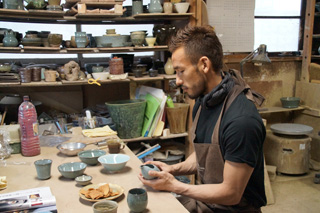
Stress from pottery is relieved by pottery
When he gets tired of working on pottery, he sometimes simply puts it aside and makes new tableware.
“Celadon ware requires total concentration, so it can be stressful. So I sometimes make tableware any way I like, and that can take care of the stress.”
He is totally devoted to pottery. And even his wife is a potter. She works in the same workshop. In a way, she is his rival. “It’s a fight for the kiln“, laughed Nakamura.
”But her sensibility is totally different from mine. Something that I like, she sometimes disapproves. That difference can be really interesting. And customers rarely criticize but she criticizes me honestly. I am thankful for that. But to tell the truth, her criticism can really bring me down.” He said laughing.
